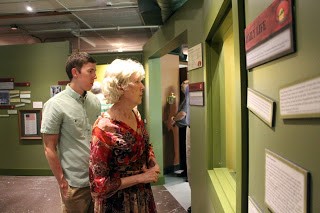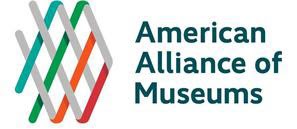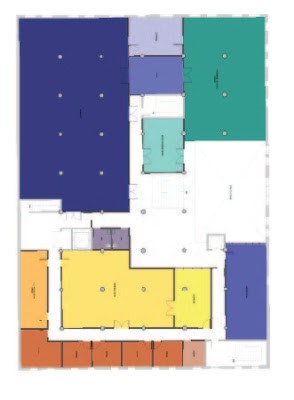Collections Stewardship
February 22, 2016

Have you ever wondered whether a museum is doing a good job? Museums ask these same questions. What can we do better? One purpose of the American Alliance of Museums (AAM) is to define what makes a museum a professional institution. The AAM has compiled a list of what they consider to be the professional standards that museums should follow. Those museums that meet these standards can apply for accreditation at the AAM and, if they pass, are recognized as accredited institutions--a gold medal of sorts for museums.

AAM’s accreditation standards are rigorous. In fact, only 5% of all museums in the United States are accredited by the AAM. To help museums assess how they can improve themselves, the AAM provides Museum Assessment Programs (MAPs). A MAP is a way for a museum to see how well it complies with the AAM’s standards and receive feedback on what can be improved. A MAP consists of two parts: a self-study workbook and an on-site peer review.
In the spring of 2014, the Museum of World Treasures began a MAP focused on Collections Stewardship. The MAP looked at how well the Museum kept its artifacts (both physical storage and record keeping), the state of the collections policy and plan, and other topics related to the Collections Department.
The assessment began with the self-study workbook. This workbook was a lengthy questionnaire asking about policies, governance, the number of collections in the Museum, and a host of other queries. The workbook also included some activities that you wouldn't necessarily associate with collections. For example, was MOWT prepared for a natural disaster, and if our collections were lost would we be able to recover the records to prove what artifacts we had on hand? In order to tackle this MAP we formed a MAP Committee and began work on the workbook in April, 2014. We completed the workbook and submitted it to AAM just three months later.
|
|
|
A proposed plan of the third-floor renovation with |
In late August, 2014, the second half of the process began when our peer reviewer, Jackie Hoff, visited the Museum. Hoff works at the Science Museum of Minnesota as the Director of Collections Services. She was impressed with the Museum’s direction and complimented us on the progress we have made over the past several years. Hoff noted, however, that there was still much room for improvement--as we expected. A few big things that she noted and we're continuing to work on are listed below:
- Expanded area for collections storage. In fact, she suggested we would need to triple the space we currently have.
- Update the Collections Policy and write a Collections Plan--done as of July, 2015.
- Maintain a routine cleaning schedule to ensure that the artifacts on display are cleaned and curatorial storage spaces do not become cluttered creating a harmful environment for the artifacts. In short, even Ivan needs his teeth brushed!
Based on Hoff's assessment of where we were at in 2014 and where we needed to go, she suggested it would take 10 years before we would be ready for accreditation.
|
|
|
Our mission is to provide a gateway to the past for our visitors! |
The Collections Stewardship MAP that occurred in 2014 was extremely beneficial to the Museum of World Treasures. It has already influenced the Museum and its activities. On July 20, 2015, the Museum officially adopted a new Collection Policy and a Collections Plan. These documents had been created by the Collections Committee, which had been working on them since January, 2015. Additionally, the need for an expanded collections storage area helped spark discussions to do major renovations on the third floor. The Museum is currently working with the architectural firm Schaefer, Johnson, Cox, and Frey to create a new floor plan and design for the third floor. Not only will these changes make the Museum of World Treasures a new and exciting place to visit, they will also demonstrate the Museum’s commitment to be the best steward of the priceless artifacts that have been entrusted to its care.
Not every item on the MAP assessment requires major architectural changes. In fact, the Museum has applied for a grant to help temporarily alleviate some our curatorial storage issues, but results regarding the grant are not set to be released until late 2016. Can you help in the mean time? Donations for proper cabinetry storage are needed before summer 2016, so that progress can begin on completing accreditation measures. If you are interested in helping with this project, please visit our website or email Development Director, Crystal Neihoff, at development@worldtreasures.org.
